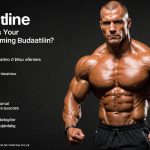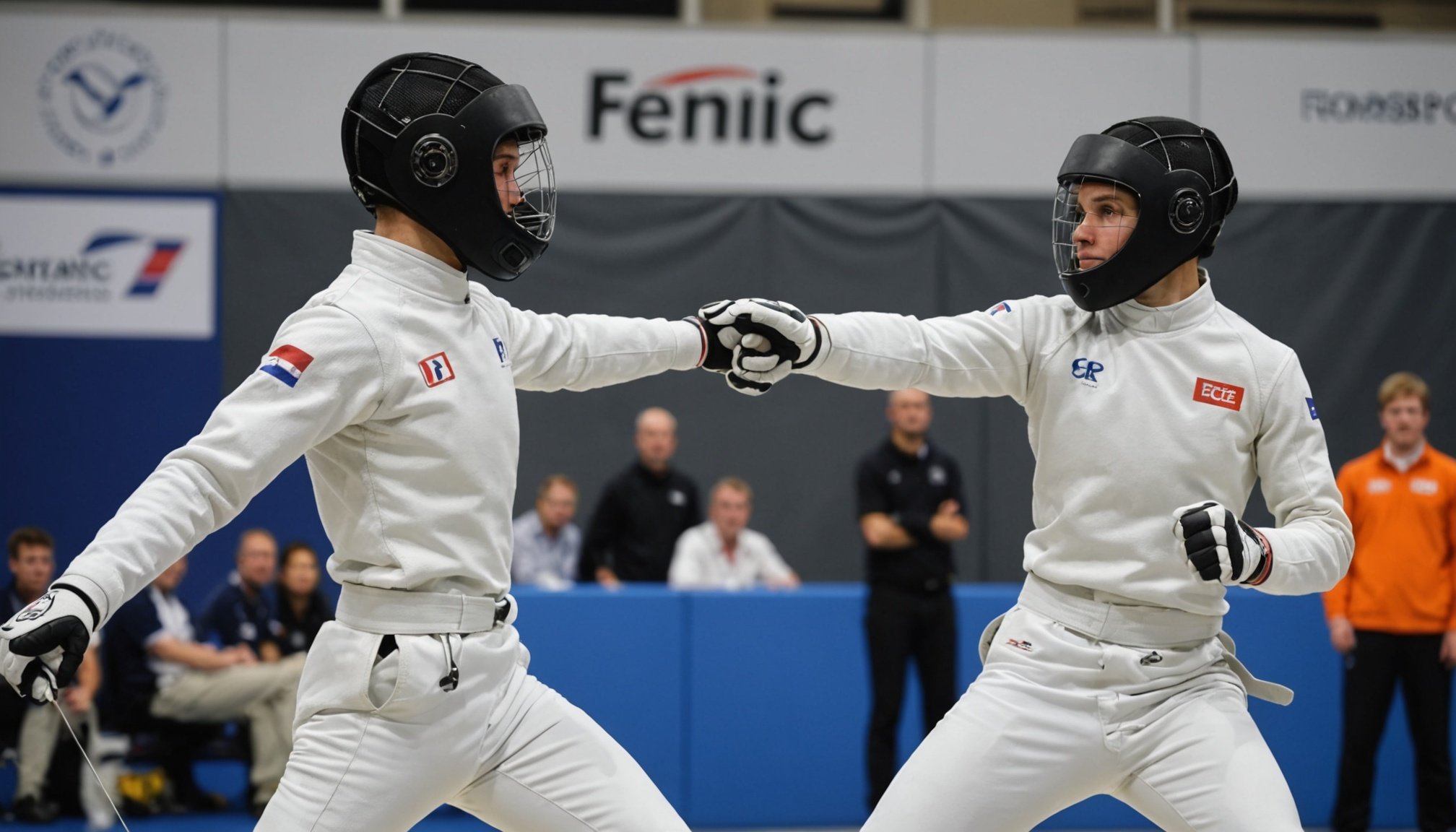Unlocking Speed: Strategies Used by UK Fencing Athletes to Enhance Reaction Times in Competition
Understanding the Importance of Reaction Time in Fencing
In the high-stakes world of competitive fencing, reaction time is the difference between victory and defeat. Fencers must be able to anticipate and respond to their opponents’ moves in a fraction of a second. For UK fencing athletes, enhancing reaction time is a critical component of their training and performance strategy.
Reaction time in fencing is not just about quick reflexes; it also involves a deep understanding of the sport, the opponent’s tactics, and the ability to make split-second decisions. UK fencers often undergo rigorous training programs that include a combination of physical conditioning, tactical drills, and mental preparation to improve their reaction times.
Topic to read : Boosting Grip Strength: A Comprehensive Guide for UK Wrestlers Through Effective Weight Training Strategies
Physical Conditioning and Training
Physical conditioning is the foundation upon which all other strategies are built. UK fencing athletes engage in a variety of training methods to enhance their physical performance.
High Intensity Exercise
High intensity exercise is crucial for improving reaction time. Fencers participate in short bursts of maximal exercise, such as sprinting or jumping, to increase their muscle power and speed. For example, a typical high-intensity training session might include:
Also read : Unlocking Ultimate Recovery: Top Muscle Recovery Strategies for UK Kickboxers Post-Match
- Sprint Intervals: 20-30 seconds of all-out sprinting followed by 1-2 minutes of rest.
- Plyometric Training: Jump squats, box jumps, and other explosive exercises to increase muscle power.
- Resistance Training: Weightlifting and resistance band exercises to build strength and endurance.
Warm-Up and Cool-Down Routines
Proper warm-up and cool-down routines are essential to prevent injuries and optimize performance. A warm-up routine might include light cardio, dynamic stretching, and specific fencing drills to get the muscles ready for high-intensity activity. Cool-down routines involve static stretching to help the body recover.
Tactical Drills and Sports Medicine
Tactical drills are designed to simulate the conditions of a real fencing match, helping athletes to develop their reaction times in a more realistic setting.
Drills for Reaction Time
- Feint and Attack Drills: Fencers practice responding to feints (fake attacks) and real attacks, improving their ability to distinguish between the two.
- Multiple Attack Drills: Fencers face multiple attacks in quick succession, forcing them to react rapidly and make quick decisions.
- Blind Drills: Fencers practice reacting to attacks without seeing them, relying on auditory cues and muscle memory.
Role of Sports Medicine
Sports medicine plays a vital role in optimizing performance and preventing injuries. UK fencing athletes work closely with sports scientists and medical professionals to ensure they are in top physical condition. This includes:
- Nutrition Planning: Tailored diets to ensure athletes have the necessary energy and nutrients for high-intensity training.
- Injury Prevention: Regular check-ups and preventive measures to avoid common fencing injuries such as muscle strains and tendonitis.
- Recovery Techniques: Use of techniques like ice baths, compression garments, and massage therapy to aid in recovery.
Mental Preparation and Focus
Mental preparation is as crucial as physical training when it comes to enhancing reaction times. UK fencers use various techniques to improve their mental focus and reaction times.
Visualization Techniques
Visualization involves mentally rehearsing fencing scenarios to improve reaction times and decision-making. Athletes visualize different match situations, practicing their responses to various attacks and scenarios.
Mindfulness and Meditation
Mindfulness and meditation help athletes to stay focused and calm under pressure. These practices improve concentration and reduce stress, allowing fencers to react more quickly and accurately.
Positive Self-Talk
Positive self-talk is a powerful tool for maintaining confidence and focus. Athletes use affirmations to boost their morale and stay motivated, even in the face of intense competition.
Real-World Examples and Success Stories
Several UK fencers have exemplified the effectiveness of these strategies in competition.
Richard Kruse
Richard Kruse, a British fencer, is a prime example of how dedicated training and mental preparation can lead to success. Kruse has been a consistent performer on the international stage, attributing his success to a rigorous training regimen that includes high-intensity exercise, tactical drills, and mental preparation.
“The key to my success is the combination of physical and mental training. I spend hours in the gym and on the piste, but I also make sure to visualize my matches and stay focused through mindfulness and positive self-talk,” – Richard Kruse.
Practical Insights and Actionable Advice
For aspiring fencers looking to enhance their reaction times, here are some practical insights and actionable advice:
Create a Balanced Training Program
- Include High Intensity Exercise: Incorporate sprint intervals, plyometric training, and resistance training into your routine.
- Incorporate Tactical Drills: Practice feint and attack drills, multiple attack drills, and blind drills to improve your reaction times.
- Focus on Mental Preparation: Use visualization techniques, mindfulness, and positive self-talk to stay focused and calm under pressure.
Seek Professional Guidance
- Work with a Coach: A qualified coach can help you develop a tailored training program.
- Consult Sports Scientists: Sports scientists can provide valuable insights into nutrition, injury prevention, and recovery techniques.
Stay Consistent
- Regular Training: Consistency is key when it comes to improving reaction times. Ensure you train regularly and stick to your program.
- Continuous Improvement: Always look for ways to improve your training and performance. Stay updated with the latest techniques and strategies.
Comparison of Training Methods
Here is a comparative table highlighting different training methods used by UK fencing athletes:
| Training Method | Description | Benefits | Challenges |
|---|---|---|---|
| High Intensity Exercise | Short bursts of maximal exercise | Improves muscle power and speed | High risk of injury if not properly warmed up |
| Tactical Drills | Simulated fencing scenarios | Improves reaction times and decision-making | Requires a high level of physical fitness |
| Visualization Techniques | Mental rehearsal of fencing scenarios | Improves mental focus and reaction times | Requires consistent practice to be effective |
| Mindfulness and Meditation | Practices to improve concentration and reduce stress | Improves focus and reduces stress | Can be time-consuming and requires dedication |
| Resistance Training | Weightlifting and resistance band exercises | Builds strength and endurance | Requires proper form to avoid injury |
Enhancing reaction times in fencing is a multifaceted endeavor that involves physical conditioning, tactical drills, and mental preparation. UK fencing athletes who have achieved success on the international stage have done so through a combination of these strategies. By understanding the importance of each component and incorporating them into their training programs, aspiring fencers can significantly improve their performance and reaction times.
Whether you are a seasoned athlete or just starting out, the key to unlocking speed and enhancing reaction times lies in a balanced and consistent approach to training. Remember to stay focused, seek professional guidance, and continuously look for ways to improve your techniques. With dedication and the right strategies, you can achieve your goals in the fast-paced and demanding world of competitive fencing.






